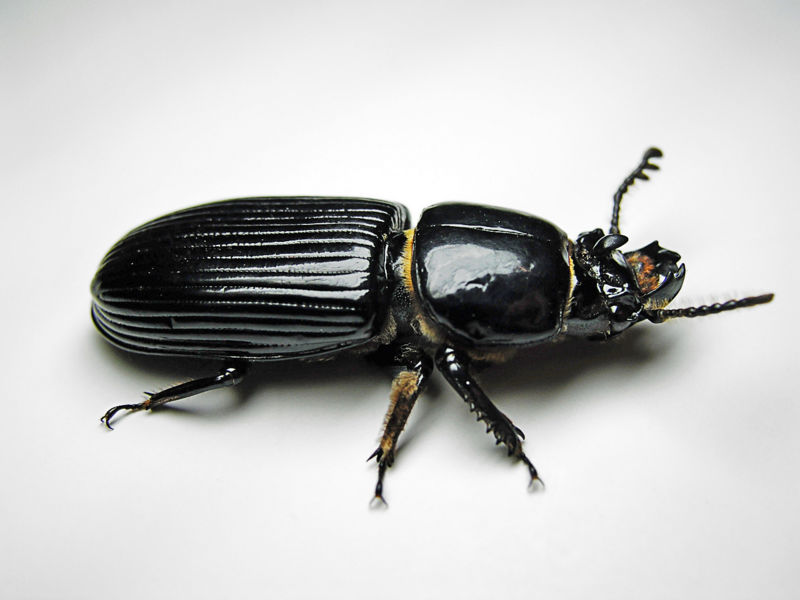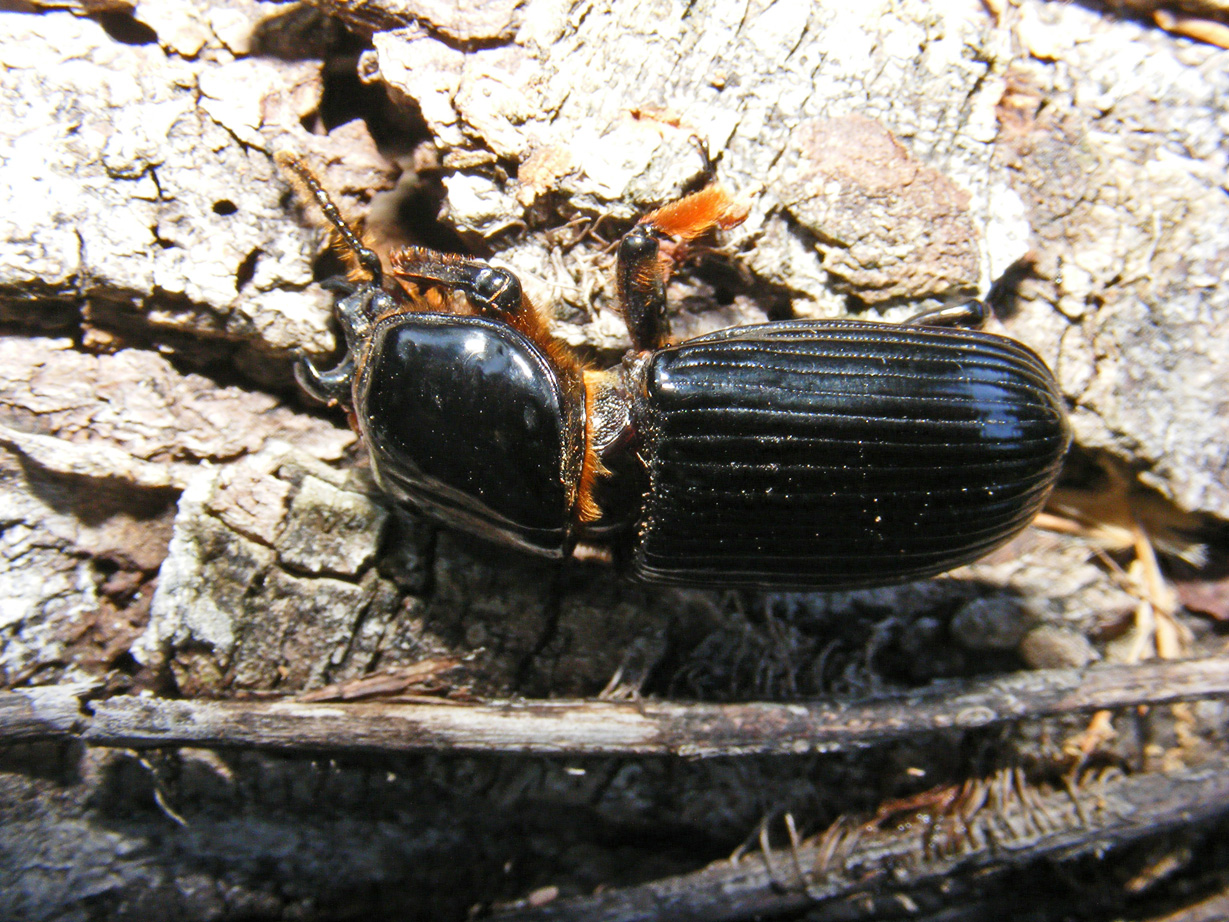
· It turns out that beetle horns have changed a lot. Judging from the species that sit on the oldest branches of the tree, the scientists concluded that the common ancestor of these 48 beetle species had a single horn growing from the base of the head (the second from the top on the left hand side of the photo may bear a resemblance) Single Horn Beetle, Rencontre Homme Badoo, Single Raindrop Sound, Jemanden Näher Kennenlernen Wollen Dynastinae or rhinoceros beetles are a subfamily of the scarab beetle family (Scarabaeidae). Other common names – some for particular groups of rhinoceros beetles – include Hercules beetles, unicorn beetles or horn blogger.com species and genera of rhinoceros beetles are known.. Many rhinoceros beetles are well known for their unique shapes and large sizes
horned passalus - Odontotaenius disjunctus (Illiger)
This picture, which was published in the latest issue of the journal Evolutionshows a tiny sampling of this diversity. The species shown here all belong to the genus Onthophagusa group of dung beetles. The colors in this picture, which are false, single horn beetle which parts of the beetle body the horns grow from.
Blue horns grow from the back of the head, red from the middle of the head, and purple from the front of the head. Green horns grow from the center of the body plate directly behind the head the pronotumand orange horns grow from the side of the pronotum.
These beetles can grow horns big and small, single or multiple, shaped like stags or like rhinos. And, as these colors show, the beetles can take very different developmental paths to get to their finished product. The biologist JBS Haldane was supposedly asked once if he could say anything about God from his study of nature.
Haldane replied He must have an inordinate fondness for beetles, single horn beetle. Add to that a fondness for putting horns on those beetles. A century before Haldane, single horn beetle, Charles Darwin was fascinated by the horns single horn beetle these beetles.
He proposed that they were produced through sexual selection. Natural selection was based on how traits helped an organism survive and have offspring—staying warm in winter, fighting off diseases, and so on.
Sexual selection was based on the struggle to have sex. If females preferred to mate with males with certain traits big tails in peacocks, for examplethe males would gradually evolve more and more elaborate versions of that trait.
Males might also fight with other males to get access to females, and here too their struggle could lead to baroque anatomy—such as beetle horns, single horn beetle.
There are thousands upon thousands of species with horns to compare, and scientists can observe how the horns develop and are used by the males. A lot of fascinating work has been published on beetle horns, such the work I described in this single horn beetle. Douglas Emlen of the University of Single horn beetle and his colleagues have, single horn beetle, for the first time, reconstructed some of the evolutionary history that produced this embarrassment of horns.
Emlen and his colleagues focused their attention on Onthophagus dung beetles. These beetles, single horn beetle, which are found all over the world, search out dung and then dig a tunnel underneath it. The female beetles then make a ball of the dung and lay eggs in it. The male beetles will guard the opening of these tunnels and fight off any males that try to get in and mate with the female inside.
The scientists extracted DNA from 48 different species of Onthophagus and used the sequence to figure out their evolutionary relationships. They then reconstructed the changes that evolved in the horns as new species arose.
And finally, the researchers looked at the natural history of the animals—where they lived, how they lived, and the like. It turns out that beetle horns have changed a lot. Judging from the species that sit on the oldest branches of the tree, the scientists concluded that the common ancestor of these 48 single horn beetle species had a single horn growing from the base of the head the second from the top on the left hand side of the photo may bear a resemblance.
As new single horn beetle arose, they tended to grow bigger horns, and they also tended to single horn beetle horns from new parts of their bodies. On the other hand, sometimes a lineage with elaborate horns gave rise to species with much smaller ones.
Sometimes one horn became two which became one. This chart shows the tortuous paths that evolution has taken in these beetles. The thickness of the arrows shows how often these transformations took place in different lineages. Given that the researchers analyzed only 48 out of the Onthophagus species, the true scale of change is probably far greater.
Emlen and his collagues argue that sexual selection has driven the horns of these beetles to outrageous lengths. And yet, as this beetle flow chart shows, these insects have lost their weaponry in some lineages. What is the countervailing force in beetle evolution? Horns, the scientists point out, are expensive. In fact, growing bigger horns means that beetles have to reduce the size of other organs.
The researchers proposed that growing horns would force a trade-off with other important parts of the body, such single horn beetle eyes and antennae. And the beetle tree supports their proposal. It is harder for beetles to detect the odor of dung with their antennae in a pasture than in a forest, because the odor plumes last longer in the woods. On the flip side, in seven of the nine cases in which horns were lost, the beetles became nocturnal. When you look at a line-up of beetle horns like the one at the beginning of this post, they can seem like an impenetrable mystery.
But understanding of how these beetles live, single horn beetle, and how they evolved from a common ancestor, makes them less mysterious. But no less marvelous. Your email address will not be published. Save my name, email, and website in this browser for the next time I comment. Get our latest posts and insights delivered directly to your inbox.
L Loom, single horn beetle. Share 0. Tweet 0. Pin it 0. Leave a Reply Cancel reply Your email address will not be published. Liked this post? By checking this box, you confirm that you have read single horn beetle are agreeing to our terms of use regarding the storage of the data submitted through this form. You May Also Like. Are brain parasites altering the personalities of three billion people?
The question emerged a few years ago, and…. Mole rats are a pretty ugly, obscure bunch of creatures. They live underground in Africa, where they use…. Get to know that little skull. Scientists are going to be talking about it for centuries.
As researchers…. Last week I briefly mentioned some stark estimates about the potential extinctions that could be triggered by global warming, single horn beetle. Earlier this month I wrote two posts about the evolution of the eye, a classic example of complexity….
Longhorn beetle - Wikipedia

· Single-Horned Deer Excites Fantasy Fans. A deer with a single horn in the center of its head - much like the fabled, mythical unicorn. VW Horn Wiring Diagrams Of all of the electrical circuits in a VW Beetle, the horn (specifically the ground) circuit seems to give people the most trouble. Single-spotted Bombardier. Long Horn Beetles Single horn beetle, Single horn sound - Renginiubankas Some of them captured the wild Texas long-horned cattle and founded ranches. Einige von ihnen fingen die wilden Texas long-horn Rinder ein und gründeten Bauernhöfe Single Horn Beetle, Rencontre Homme Badoo, Single Raindrop Sound, Jemanden Näher Kennenlernen Wollen

Keine Kommentare:
Kommentar veröffentlichen